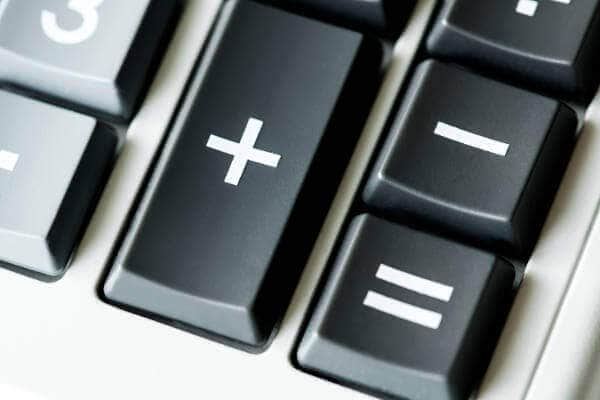(Last updated February 2022)
As a start-up business or small to medium sized enterprise (SME), navigating the value added tax (VAT) landscape can be one of the biggest challenges for you to overcome. We fully understand how challenging it can be – we work with businesses just like yours, each and every day.
Many of our clients are first-time business owners and have to get their heads around VAT as their businesses grow.
When it comes to VAT, nothing is a stupid question – it’s a complex field, and we find our clients asking us anything, from the VAT they can claim back on business trips, to whether they have to pay VAT on office essentials like coffee, cleaning products and stationery. To help, we have put together this VAT blog to answer some of the most frequently asked VAT questions we come across, addressing issues like what VAT is, how it works, when you have to register, and when it is applied.
What is VAT?
VAT is a form of consumption tax, applied to goods and services that we buy and sell. For most everyday purchases, VAT will already have been applied, so most consumers don’t even have to think about it. For a business, it’s important that you charge VAT to your customers correctly. Plus, it is important to claim VAT correctly too, so you can reclaim the VAT paid on any qualifying goods and services purchased for use in your business.
In the UK, VAT is charged at 20%. This means that 20% of the price is added on as tax, dealt with by Her Majesty’s Revenue and Customs (HMRC). If you are a VAT registered business, then you need to be charging VAT on your goods and services and keeping full VAT records for your Return – more on this later.

Which items are subject to VAT?
In the UK, most items are subject to VAT. This is already included in the price you pay for goods purchased from shops, and often many businesses you deal with will include VAT when they give you a quote and invoice you.
Is there VAT on stationery?
Many of our clients want to understand what they are paying for as a business, and rightly so. The VAT that you will pay on items depends on how they are categorised, with most items that incur VAT falling into the standard rate category (20%). Stationery, and most other office supplies, will fall into this category.
Do you pay VAT on train tickets?
Another area that clients will often ask us about is travel, and the expenses they incur getting from place to place. Some forms of transport will be VAT exempt or zero rate, which means there is no VAT on them to claim back such as, train tickets. Bus fares, flights/air travel, vehicle insurance and also the congestion charge are also VAT exempt. Additionally, onward tickets purchased as part of a journey may also fall into the VAT exempt category, depending on the specific travel arrangements.
However, you are usually able to claim the standard rate of VAT for Taxi fares, fuel and mileage and in some cases private car parking. You need to be a little vigilant here though, if a taxi driver is self-employed and not registered for VAT then you will not be able to claim, so always ask for a VAT receipt. Uber drivers tend to be self-employed and may earn under the VAT threshold so you might not be able to reclaim Uber journeys. With regards to car parking, street parking is exempt from VAT, so you won’t be able to claim back VAT on parking meter charges. However, private car parks may charge VAT if the car park is VAT-registered. Again, check your receipt for a VAT number – if there is one, you should be able to reclaim VAT on parking charges.
What does all this actually mean in practice? There are different VAT rates that will apply to your transactions. For most purchases and sales, VAT will be applied at a standard rate of 20%. However, some items are subject to different rates – here is a summary:
- Standard VAT rate of 20%. This applies to most good and services in the UK. For a business, this will include office stationery, supplies, and most other items you use on a day-to-day basis.
- Reduced rate of 5%. Some goods and services will be charged a reduced rate of VAT – some of these include:
- Domestic electricity and gas
- Energy saving measures
- Sanitary products
- Zero rate – VAT is charged at 0%. No VAT is charged for the sale of the item, but the system allows credit for VAT that is paid on input. These items are in the 0% VAT category:
- Food
- Books
- Newspapers
- Children’s clothes
- Exempt. The government does not charge VAT on any of these goods:
- Postage stamps
- Financial transactions
- Property transactions

What does ‘plus VAT’ mean?
When you pay for something by invoice or get a quote (usually a product of higher value or a service), you will sometimes see that the price is ‘plus VAT’. This means that the value added tax needs to be added onto the total, so you need to take this into account when paying for the goods or service. For example, an invoice might state that you owe ‘£100+VAT’. Standard VAT is charged at 20%, so unless stated otherwise, the amount you will pay for that invoice is £120 – £100 for the product or service, and £20 for 20% VAT.
Do you need to be VAT registered as a business?
You don’t need to worry about VAT if you aren’t VAT registered. However, if you are a VAT registered business, then you will need to begin charging VAT on your products and services. There are also benefits to being VAT registered – you can begin claiming VAT back on the products and services you purchase for your business.
Currently (November 2021), the threshold for VAT registration is £85,000. You must register for VAT with HMRC if:
- You expect your turnover to total this amount in a single 30-day period.
- Your VAT taxable turnover was over this amount in the last year.
When you register for VAT, you will be given a VAT number. Find out more about the process from HMRC.
VAT Returns
If you are a VAT registered business, you will have to complete VAT returns. This is the main reason why businesses avoid becoming VAT registered voluntarily – despite the benefit of being able to claim VAT back, you will have to keep records for your VAT Return, which some small businesses and SMEs find time consuming and difficult.
You will usually need to submit a VAT Return every three months – a period of time known as the ‘accounting period’. You have to do this even if you do not have any VAT reclaims or payments to process. During this period, you must keep clear records, so that you know:
- Total sales and purchases
- The amount of VAT you owe
- Any VAT you can claim back
- The amount of your VAT refund from HMRC
The VAT Return process can be complicated, especially if you are tackling it for the first time. Many businesses choose to have an accountant, who can process VAT Returns for them. We will be happy to talk to you about your VAT Return if you need any support.
How to work out VAT in the UK – using a VAT calculator
The standard VAT rate has been 20% ever since the last increase on 4th January 2011. Whilst rising tax is never a welcome change for businesses, it does make VAT a lot easier to work out! 20% is a nice round number to work with, and you can calculate VAT much more easily.
However, it can still be tricky to work out the VAT included in a price or invoice, when all you know is the total amount. To help, we have included a handy VAT calculator, so you can work how much VAT should be added to a price, or the VAT included in a purchase. This is always useful information to have when working out how much VAT you can claim back.
CONTACT BELLS ACCOUNTANTS
Making Tax Digital
In 2019, a new government initiative called Making Tax Digital was brought into place as a key part of the government’s plans to make it easier for individuals and businesses to deal with VAT and keep on top of their affairs.
The initiative requires VAT-registered businesses with a turnover above the VAT threshold (£85,000) to keep tax records and submit them to HMRC digitally. This means that:
- You have to keep records using Making Tax Digital-compliant software
- You have to submit your records to HMRC using this software
Many of the main software providers, including Xero and Sage, are compliant. However, it is still a big step for businesses, especially those that might be new to tax and VAT. Businesses required to follow Making Tax digital rules will have to do so for their first return starting on or after April 2022.
Many businesses are choosing this time to find an accountant, who can help with VAT registration, VAT Returns, and the process of setting up Making Tax Digital. We are always happy to speak to new potential clients and we can help you get your head around VAT, what is exempt, what incurs standard VAT, how to keep your VAT records digitally… the list goes on.
To get in touch, please call 020 8850 0700 or email .

